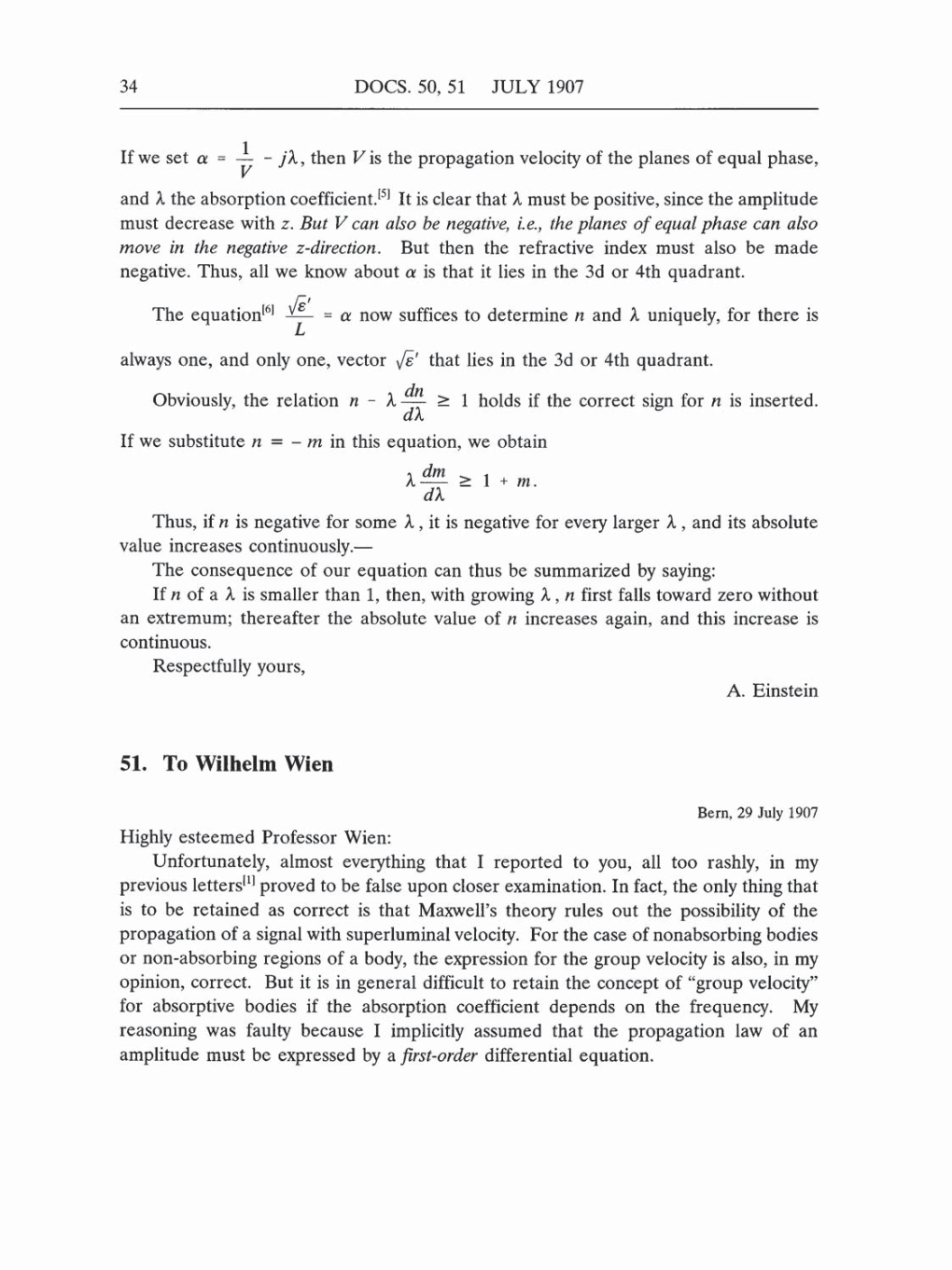34
DOCS.
50,
51
JULY
1907
If
we
set
a
=
-
jX,
then
V is
the
propagation
velocity
of the
planes
of
equal phase,
and
X
the
absorption coefficient.[5]
It
is
clear
that
X
must be
positive,
since
the
amplitude
must
decrease
with
z.
But V
can
also
be
negative, i.e.,
the
planes
of
equal
phase
can
also
move
in
the
negative
z-direction. But then
the refractive index must also
be
made
negative.
Thus, all
we
know
about
a
is
that
it lies in the 3d
or
4th
quadrant.
The
equation[6]
=
a
now
suffices to
determine
n
and
X uniquely,
for there
is
L
always
one,
and
only one,
vector
Je'
that
lies in
the
3d
or
4th
quadrant.
dn
Obviously,
the relation
n
-
X
--
1
holds if the correct
sign
for
n
is
inserted.
dX
If
we
substitute
n
=
-
m
in this
equation,
we
obtain
a
dm
_
!
a
1
+
m.
dX
Thus,
if
n
is
negative
for
some X
,
it
is
negative
for
every
larger
X
,
and its
absolute
value
increases
continuously.-
The
consequence
of
our
equation
can
thus
be
summarized
by saying:
If
n
of
a
A,
is
smaller than
1,
then,
with
growing X,
n
first falls
toward
zero
without
an
extremum;
thereafter the
absolute
value of
n
increases
again,
and
this
increase
is
continuous.
Respectfully yours,
A.
Einstein
51.
To Wilhelm
Wien
Bern,
29
July
1907
Highly
esteemed Professor
Wien:
Unfortunately,
almost
everything
that
I reported
to
you,
all too
rashly,
in
my
previous
letters[1] proved
to be false
upon
closer examination. In
fact,
the
only thing
that
is to be
retained
as
correct
is
that
Maxwell's
theory
rules
out
the
possibility
of the
propagation
of
a signal
with
superluminal
velocity.
For the
case
of
nonabsorbing
bodies
or
non-absorbing
regions
of
a body,
the
expression
for the
group
velocity
is
also,
in
my
opinion,
correct.
But it
is
in
general
difficult to
retain the
concept
of
"group velocity"
for
absorptive
bodies
if
the
absorption
coefficient
depends
on
the
frequency. My
reasoning
was faulty
because
I
implicitly
assumed that the
propagation
law
of
an
amplitude
must be
expressed
by a
first-order
differential
equation.
